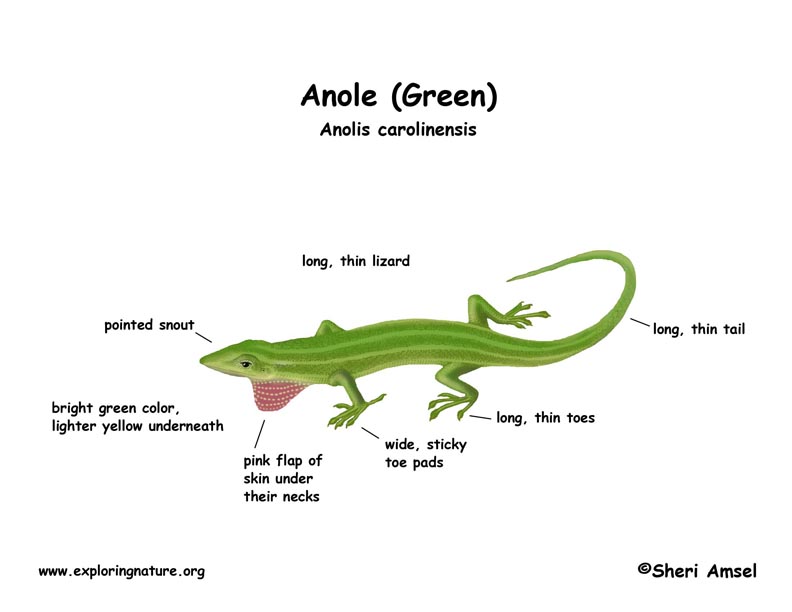

They are found in the Southeastern U.S. west to Texas.
They live in a wet, green, shady habitat, in trees and shrubs. They will enter homes and yards.
They are long, thin lizard with a pointed snout with a pointed snout. They reach up to 8” long including long, thin tails. They are a bright green color, lighter yellow underneath. They can change to browner coloring to blend in. They have wide, sticky toe pads called lamellae for climbing. Males have a pink flap of skin under their necks called a dewlap that they used to display for females and to in defending their territory.
They are territorial. Males display their red dewlap and bob their heads to mark territory.
They eat small insects and spiders. They hunt in the greenery and along the outside of houses. Their vision is adapted for the movement of prey.
Females can lay one small, leathery egg twice a month in moist soil and shade. The young hatch out in 5-7 weeks.
Kingdom: Animalia
Phylum: Chordata
Subphylum: Vertebrata
Class: Reptilia
Order: Squamata
Family: Polychrotidae
Genus: Anolis
Species: A. carolinensis
When you research information you must cite the reference. Citing for websites is different from citing from books, magazines and periodicals. The style of citing shown here is from the MLA Style Citations (Modern Language Association).
When citing a WEBSITE the general format is as follows.
Author Last Name, First Name(s). "Title: Subtitle of Part of Web Page, if appropriate." Title: Subtitle: Section of Page if appropriate. Sponsoring/Publishing Agency, If Given. Additional significant descriptive information. Date of Electronic Publication or other Date, such as Last Updated. Day Month Year of access < URL >.
Amsel, Sheri. "Anole (Green)" Exploring Nature Educational Resource ©2005-2024. December 14, 2024
< http://exploringnature.org/db/view/531 >


